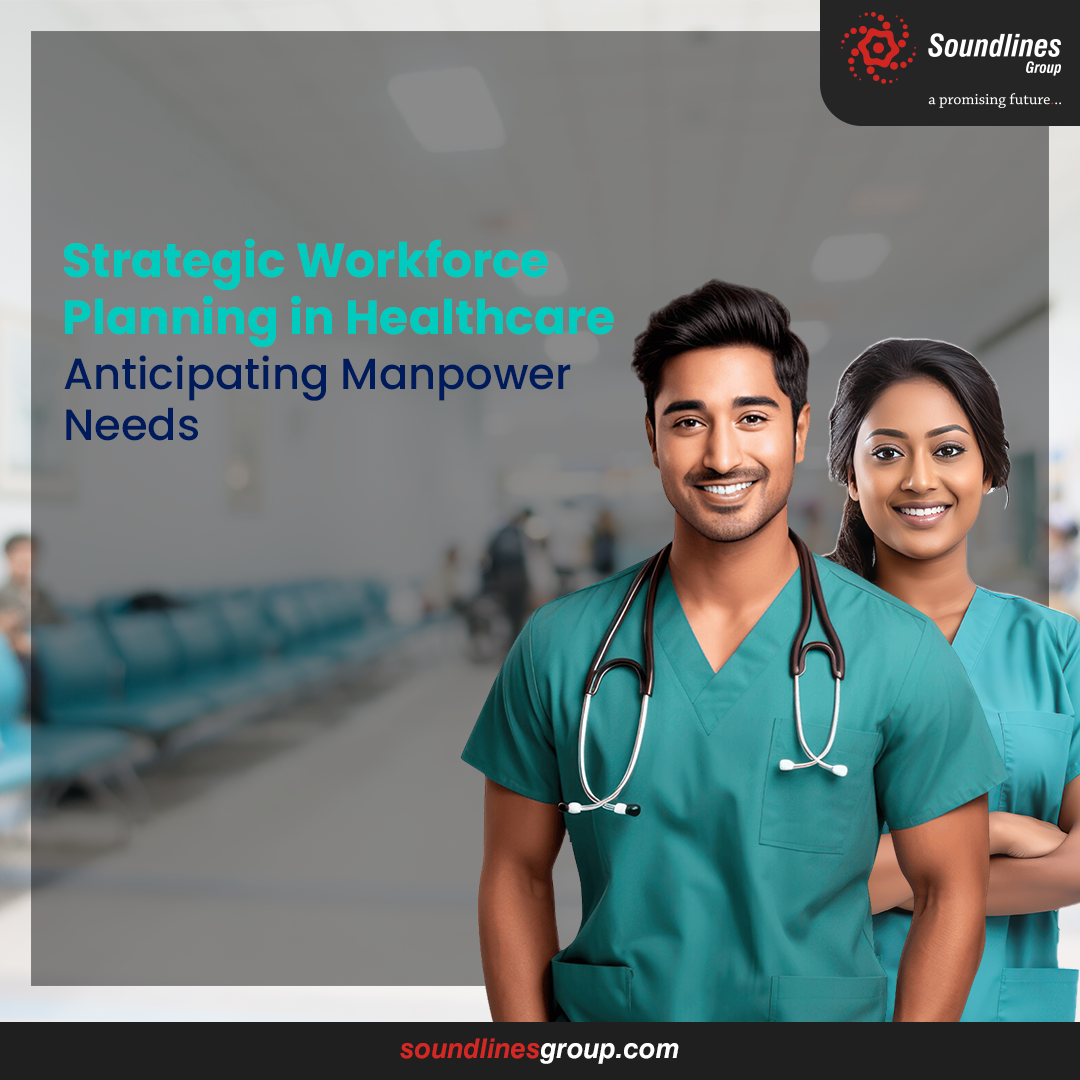In the dynamic world of healthcare, ensuring that organizations are equipped with the right number of skilled professionals is paramount to delivering quality patient care. This necessity has underscored the importance of strategic workforce planning, a proactive approach that enables healthcare providers to anticipate and meet their manpower needs effectively. This article delves into the significance of strategic workforce planning in healthcare, providing insights and tips on how organizations can partner with recruitment agencies to foresee and fulfill their staffing requirements.
The Importance of Strategic Workforce Planning
Strategic workforce planning involves a systematic process to predict an organization’s future staffing needs and develop strategies to meet these requirements. For healthcare institutions, this planning is crucial for several reasons:
- Ensuring Continuity of Care: Adequate staffing ensures that patient care remains uninterrupted, even during peak periods or unexpected absences.
- Adapting to Industry Changes: Healthcare is an ever-evolving field with continuous advancements in medical technology and treatment methodologies. Strategic planning helps organizations adapt to these changes by ensuring the workforce has the necessary skills and knowledge.
- Improving Patient Outcomes: A well-planned workforce can lead to improved patient outcomes by maintaining optimal staff-to-patient ratios and reducing burnout among healthcare workers.
- Cost Management: Effective workforce planning helps manage labor costs by avoiding overstaffing or understaffing, which can lead to financial inefficiencies.
Steps to Effective Workforce Planning in Healthcare
To implement effective strategic workforce planning, healthcare organizations should follow these steps:
- Conduct a Workforce Analysis: Begin by analyzing the current workforce to understand the existing skills, demographics, and distribution of staff. Identify areas with potential shortages or surpluses.
- Forecast Future Needs: Anticipate future staffing needs based on factors such as patient demographics, projected growth in patient numbers, and emerging healthcare trends. This step involves identifying the types of roles that will be in demand, such as nurses, physicians, or medical laboratory technologists.
- Develop a Talent Pipeline: Establish a pipeline of qualified candidates to fill anticipated vacancies. This may involve partnerships with educational institutions, offering internships, or engaging with recruitment agencies to source talent.
- Implement Training Programs: Invest in ongoing training and professional development for existing staff to ensure they can adapt to new technologies and methodologies. This not only improves patient care but also helps in retaining skilled employees.
- Monitor and Adjust: Continuously monitor the workforce plan and make adjustments as needed based on real-time data and feedback. This iterative process ensures the organization remains responsive to changing needs.
Partnering with Recruitment Agencies
Recruitment agencies can play a pivotal role in strategic workforce planning by providing expertise and resources that streamline the hiring process. Here’s how healthcare organizations can benefit from such partnerships:
- Access to a Broad Talent Pool: Recruitment agencies have extensive networks that can provide access to a diverse pool of candidates, including international talent. This is particularly useful for filling specialized roles such as anesthesiologists or health information managers.
- Expertise in Compliance and Licensing: Agencies are well-versed in the regulatory requirements for healthcare professionals. They can assist with ensuring that all candidates meet the necessary licensing and certification requirements.
- Streamlined Recruitment Process: Recruitment agencies manage the entire hiring process, from sourcing candidates to conducting interviews and background checks. This reduces the administrative burden on healthcare organizations and speeds up the hiring process.
- Insights and Market Trends: Agencies can provide valuable insights into market trends, helping organizations anticipate future staffing needs and adjust their workforce plans accordingly.
Practical Tips for Effective Workforce Planning
To enhance strategic workforce planning, healthcare organizations should consider the following practical tips:
- Utilize Data Analytics: Leverage data analytics to forecast staffing needs accurately. This involves analyzing historical data, current workforce metrics, and external factors such as changes in healthcare policy or patient demographics.
- Engage with Stakeholders: Involve key stakeholders, including department heads and frontline staff, in the planning process. Their insights can provide a more comprehensive understanding of staffing needs and challenges.
- Implement Flexible Staffing Models: Adopt flexible staffing models that allow for adjustments based on real-time demand. This could include part-time roles, temporary contracts, or float pools that provide additional support during peak periods.
- Focus on Employee Retention: High turnover rates can disrupt workforce planning. Focus on employee retention strategies, such as offering competitive benefits, fostering a positive work environment, and providing opportunities for career advancement.
Conclusion
Strategic workforce planning is essential for healthcare organizations to ensure they have the right number of skilled professionals to meet patient needs. By anticipating future staffing requirements and developing proactive strategies, healthcare providers can improve patient outcomes, manage costs, and adapt to industry changes.
Soundlines Group, a leading recruitment agency, specializes in healthcare recruitment, providing tailored solutions to help organizations build and maintain a strong workforce. With extensive experience and a global talent pool, Soundlines Group can assist healthcare organizations in navigating the complexities of workforce planning, ensuring they are well-prepared for future staffing needs. Partner with Soundlines Group to enhance your workforce strategy and achieve long-term success in the healthcare industry.
